Cool Color Drawings of Girls
10 Color Palettes Based on Famous Paintings
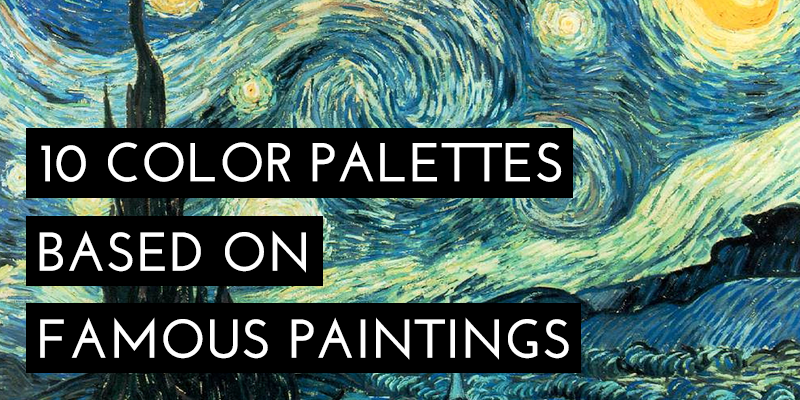

When creating a Pinterest inspiration board for my branding projects, I like incorporating some fine art pieces. Studying old masters is a long-used method for learning and building your artistic skills and they're a dandy source of inspiration.
In that style, I decided it might exist helpful to take ten famous paintings and focus on their use of color and see how masters put together cohesive and expressive palettes so you can implement similar strategies into your brand's color palette.
Saint Catherine of Alexandria by Raphael
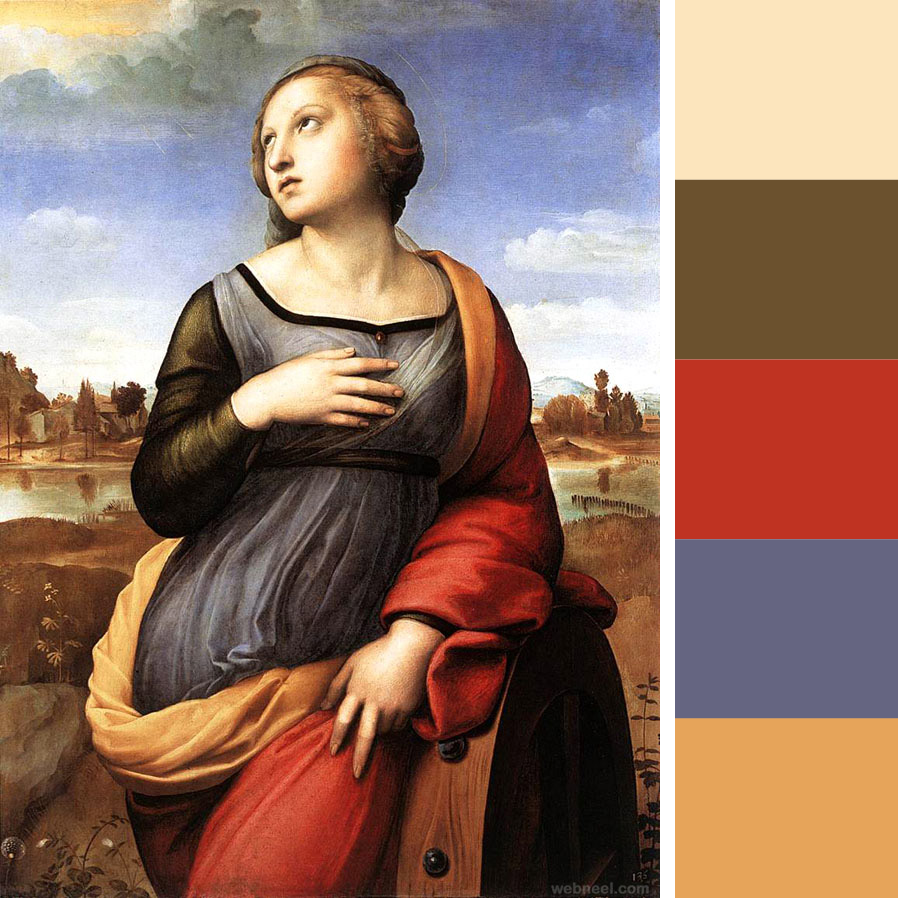
What I love about Raphael's color palettes is his use of cherry and blue. It allows him to use potent colors without evoking strong emotions because the warm and cool colors are balancing each other out. That, combined with the supporting earthy hues create an eye-catching notwithstanding stable and grounded palette.
Swell Wave Off Kanagawa (Kanagawa Oki Nami Ura) by Hokusai
In dissimilarity, Hokusai leans heavily on blues and grays in his famous woodcut impress to create a moody and cool palette. Even so, you will notice, he uses warmer grays and a foam sky to go on the art from feeling monotone or cold.
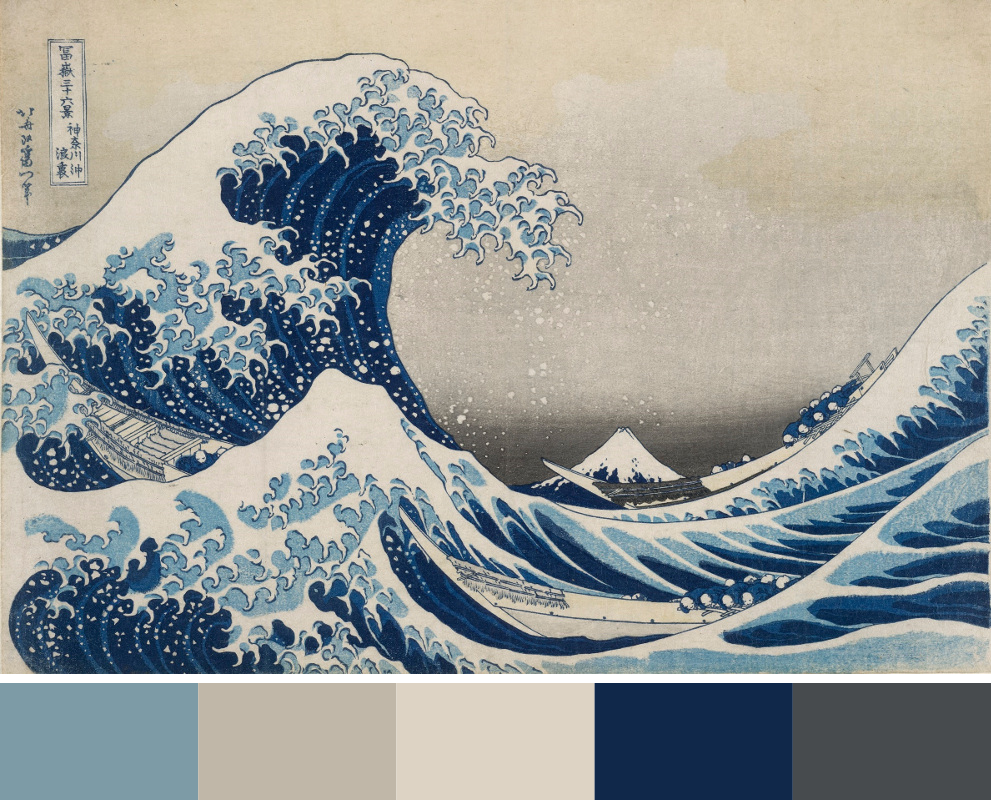
Girl with a Pearl Earring past Johannes Vermeer
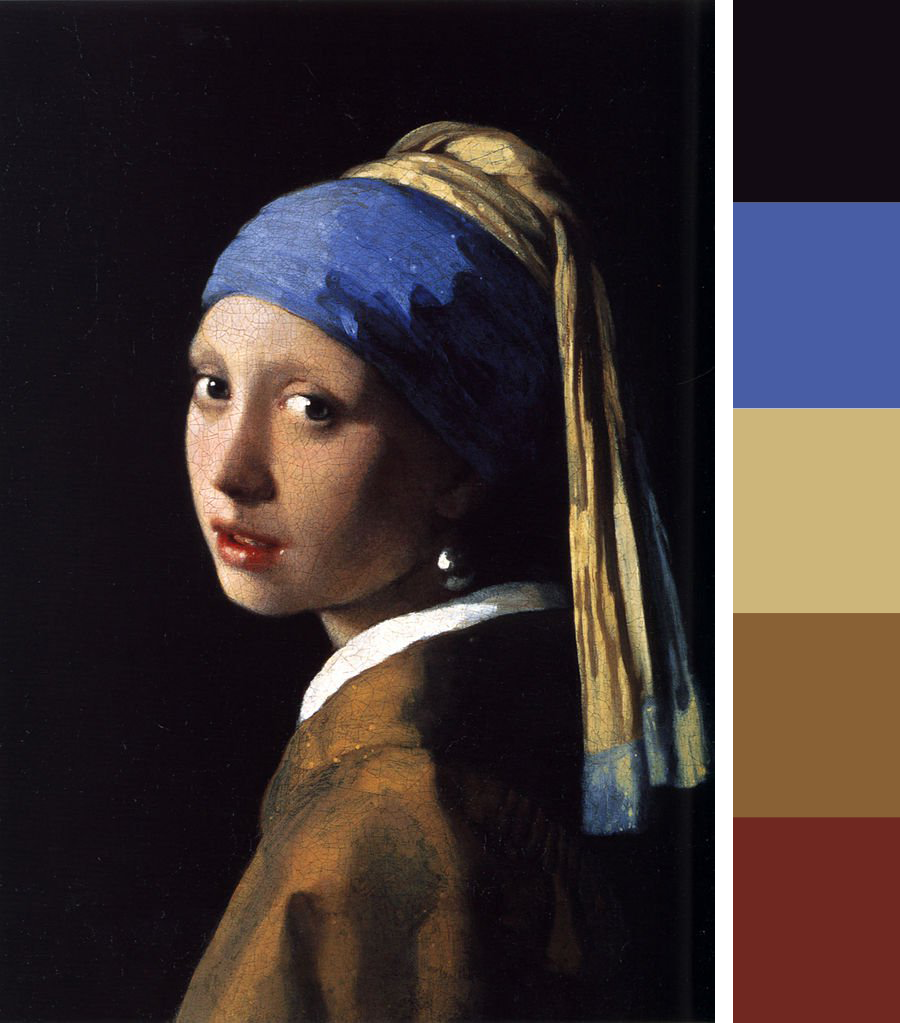
Vermeer uses a high contrast palette to bring focus to certain areas of the painting. The bright whites of the eyes, the neckband, and the pearl earring pop against the dark colors and bring focus to the feminine features of the daughter. Similarly, red is used only of the lips - drawing your eyes in to the rich color that contrasts with the muted and cool tones in the remainder of the painting.
Fifty Etoile past Edgar Degas
Degas starts with a very muted and earthy palette, simply brings in some softness and femininity with the blush pink apparel of the main figure and the dusty bluish shadows. The blending of warmth, world tones and feminine colors creates a gentle and welcoming feeling.
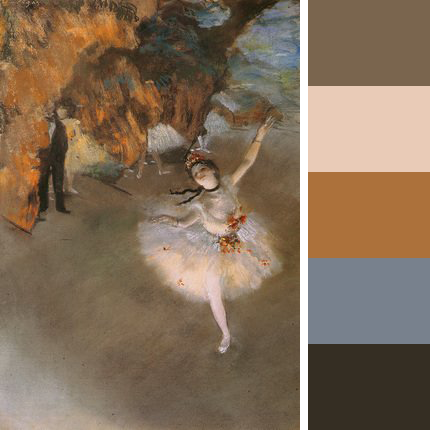
The Mona Lisa by Leonardo da Vinci
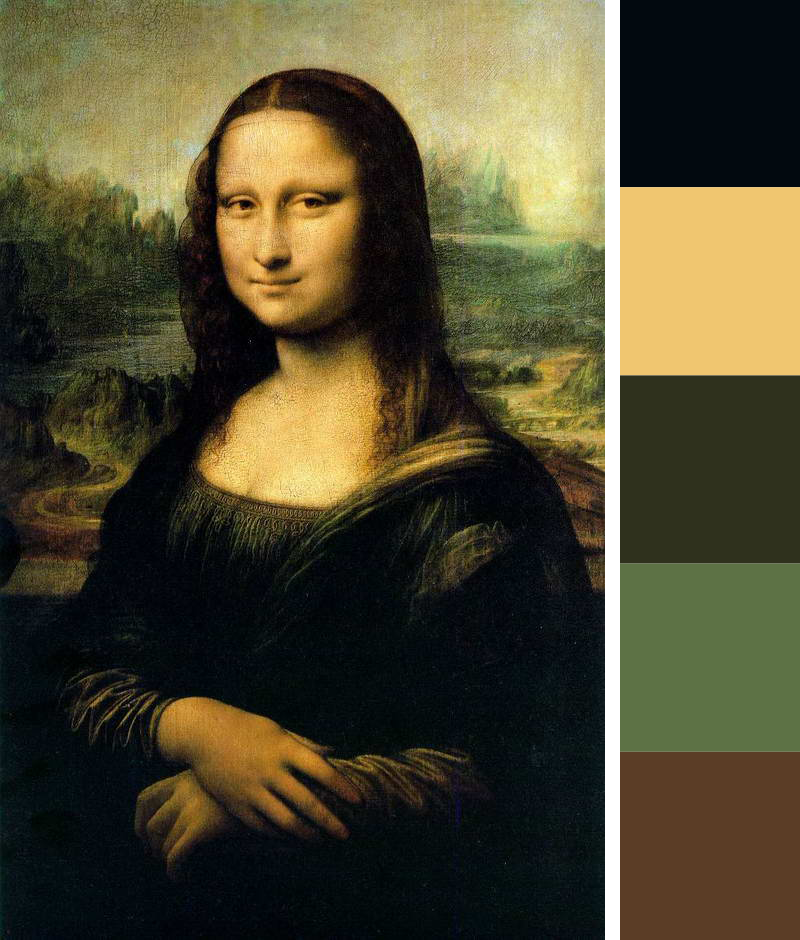
In possibly the most famous painting of all time, Leonardo da Vinci sticks to a strictly earthtone color palette. Using a muted and neutral colour palette allows the subtle detailing and rich depth to be the star of the show. He also uses faded earth tones equally the properties, bringing the rich, deep colors of the central figure to the stand out.
Starry Night by Vincent van Gogh
Starry Night has a color pallette that feels surprising modern. Vincent van Gogh stuck to a heavily cool-tone color palette and added an accent of bright yellow to pop out and add contrast and cheer to the properties backdrop. All of the colors he uses are rich and vibrant, adding energy to the painting.
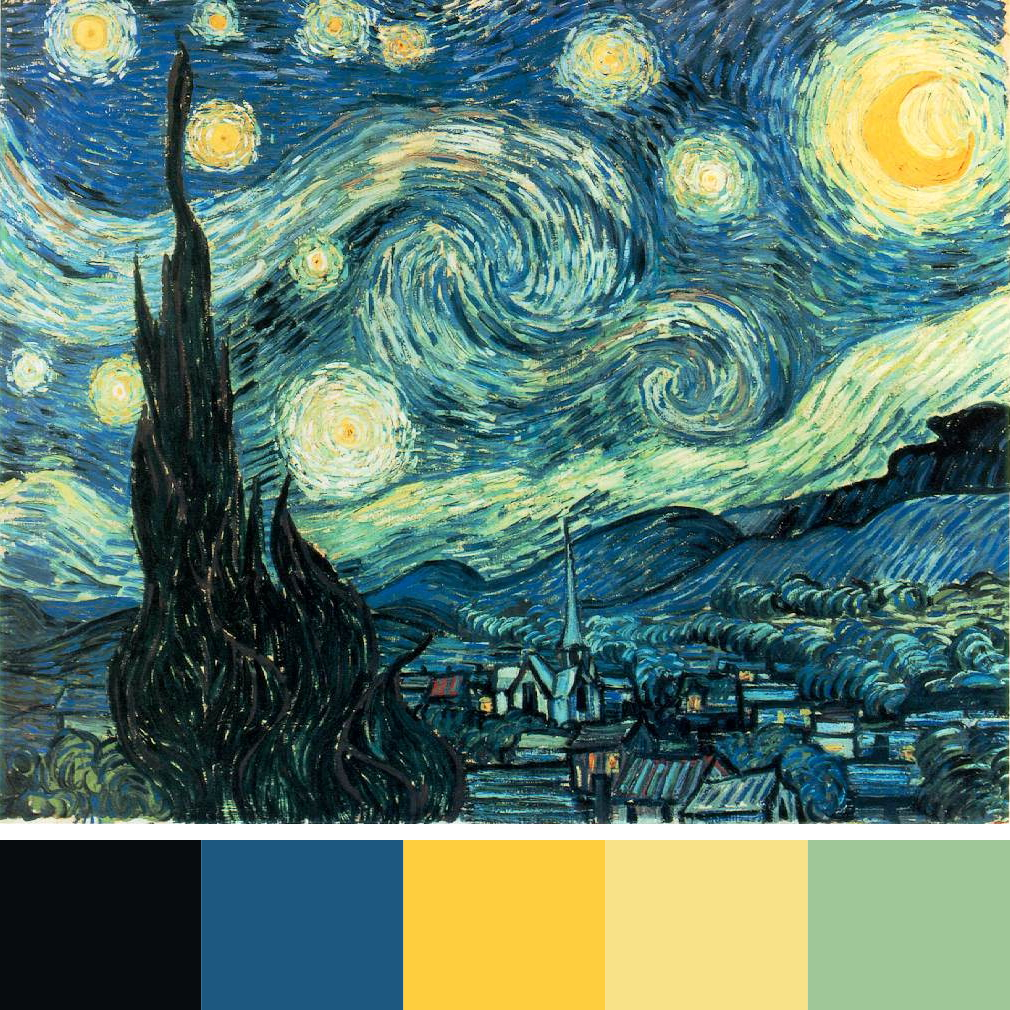
Nighthawks by Edward Hopper
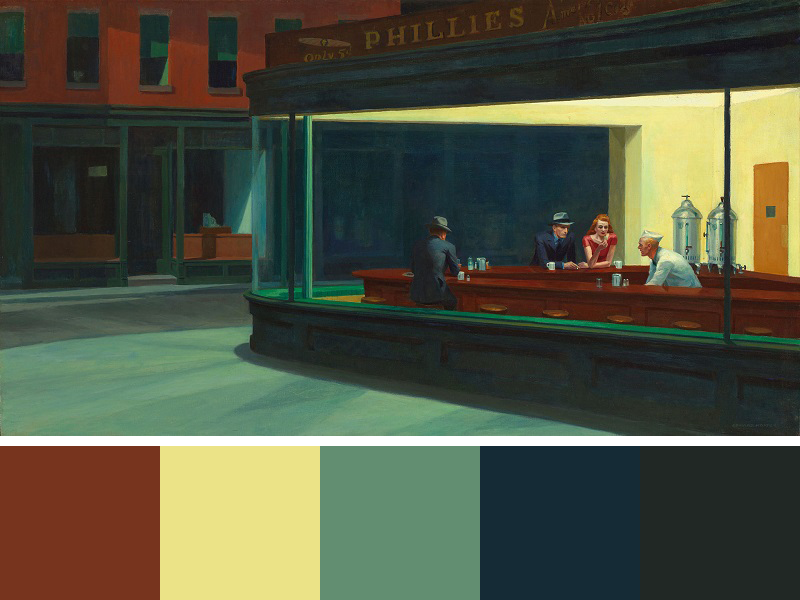
Hopper uses deep, bold colors to prepare a moody tone. It's night in the city - dark streets, rich colors from signs in shadow, all punctuated past brilliant pools of yellow low-cal coming from lively bars and restaurants. The rich colors brand us feel sophisticated - the pop of yellow speaks of excitement and anticipation.
The Kiss by Gustav Klimt
Klimt uses a muted color palette and depression contrast to build a soft, intimate feeling while still using a wide range of colors. Using two tones of muted yellow as the foundation makes the blues, purples, reds, and greens popular out from the background without existence too vibrant or nighttime.
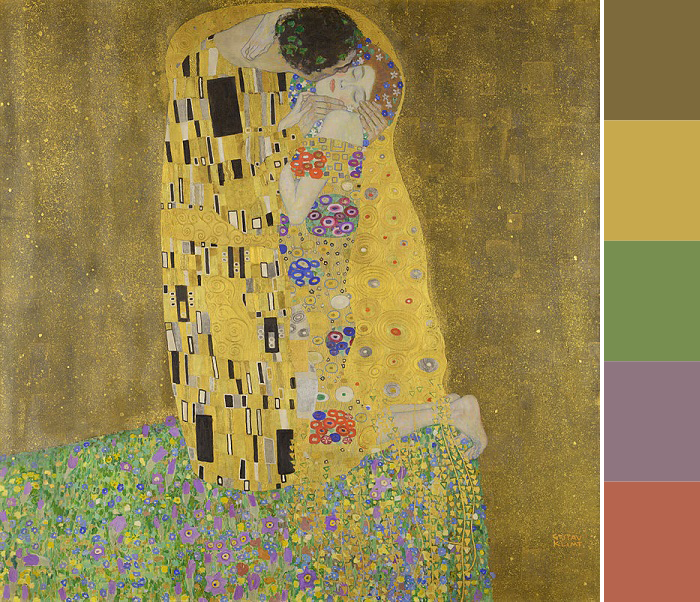
The Nightwatch by Rembrandt
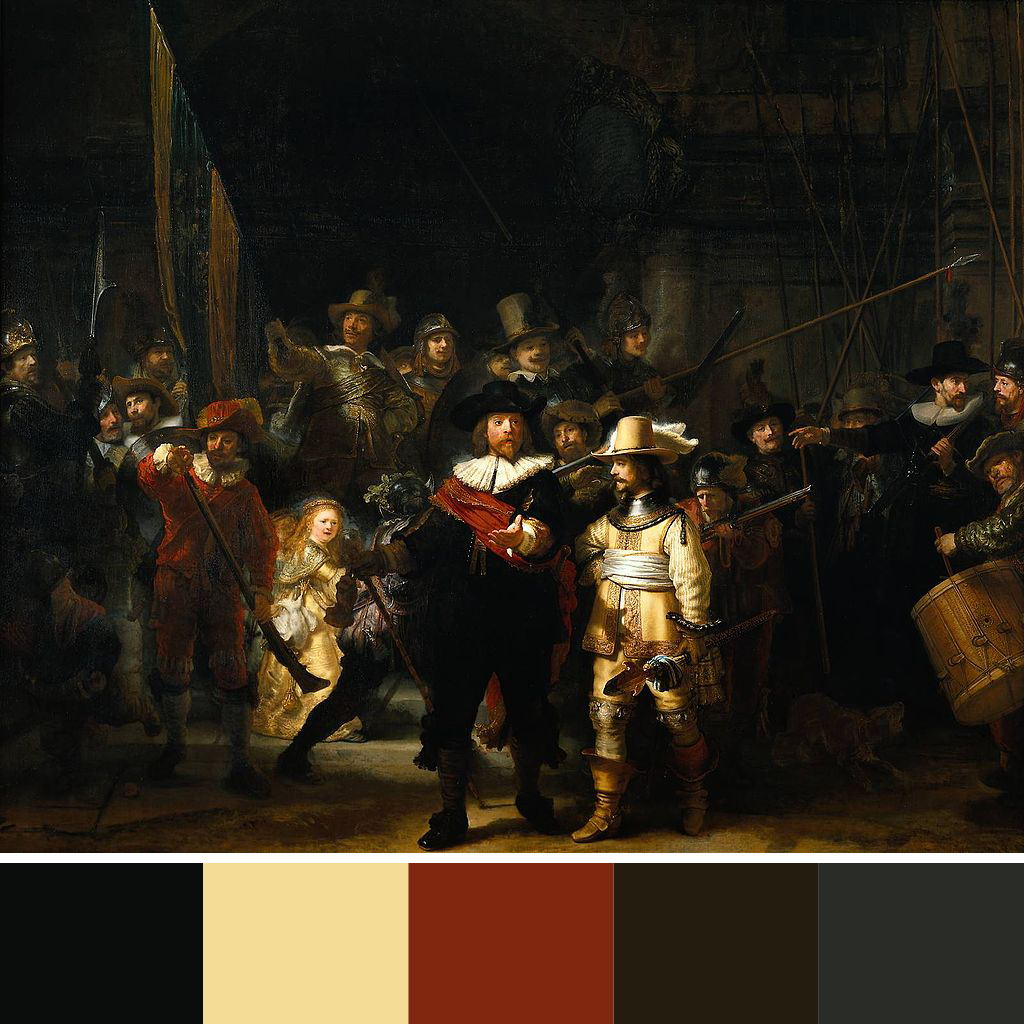
In his archetype painting filled with detail and depth, Rembrant uses two colors to bring focus in the chaotic composition. Cream is used to draw your middle first - to the two men in the front, then the woman in the midground. Then, our eyes are drawn to the splashes of red in the supporting figures. The rest of the painting pulls dorsum in the dark tones.
The Scream by Edvard Munch
Munch uses bright, contrasting colors to heighten emotions. Pairing bright reds and oranges with sickly greens makes united states of america experience uneasy and as if something is wrong.
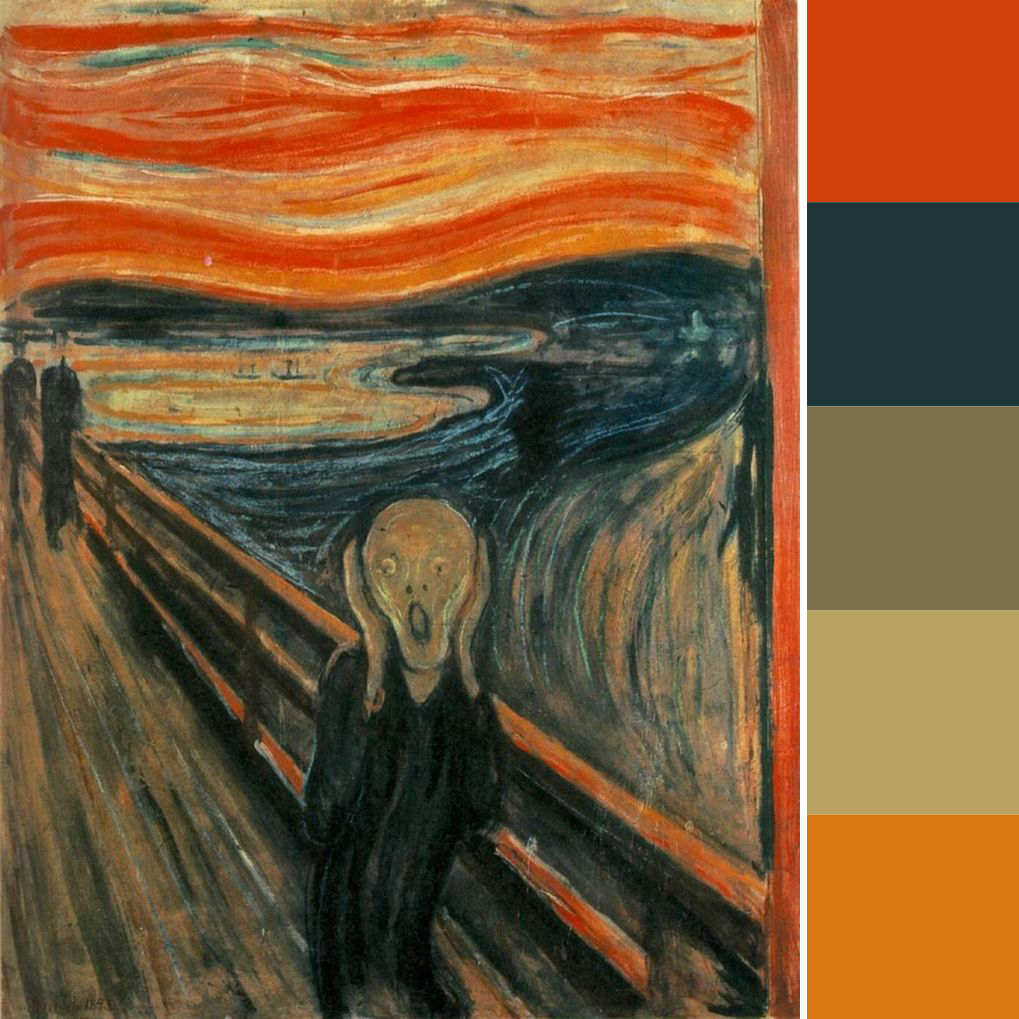
Thanks for Reading!
But every bit these masters used colour to add together depth to their visual stories, so tin yous in choosing your brand colors. Though I wouldn't suggest implementing Munch's colors unless you lot're selling Halloween gear...
Next week
A case study involving magic and post.
Source: http://sierrakellermeyer.com/blog/10-color-palettes-based-on-famous-paintings
0 Response to "Cool Color Drawings of Girls"
Enregistrer un commentaire